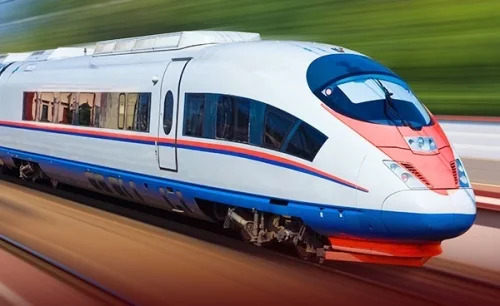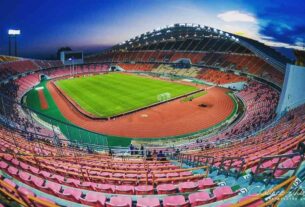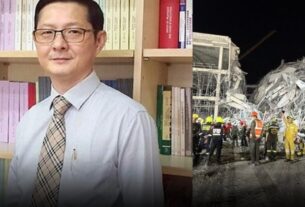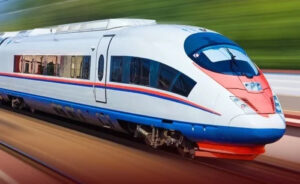 Long-planned high-speed rail through Thailand’s Isaan region raises hopes and questions
Long-planned high-speed rail through Thailand’s Isaan region raises hopes and questions
As the first phase of the high-speed-train rail between Bangkok and Nakhon Ratchasima edges toward completion, China moves closer. Part of the Belt and Road initiative of China, Isaan will be linked to China proper to the north and Singapore to the south. But, what benefits might the rail bring? Will the line bring more tourists to the region? Or will the region be overlooked as tourists speed overhead on the new elevated track currently under construction?
Long-planned high-speed rail through Isaan raises hopes and questions
The infrastructure of the Thai-Chinese high-speed train project is inching its way up through the Northeast. As of June this year, 45% of Phase 1 connecting Bangkok and Nakhon Ratchasima has been completed. The line will run through Isaan to a transshipment center in Nong Khai, connecting with the 414-kilometer line that was completed in Lao PDR in 2021.
When Phase 1 is completed, now slated for 2026, Northeasterners will be one more step away from being linked to China’s Yunnan province to the North and Bangkok to the south. Eventually, the high-speed train line will extend to Singapore, forming a key artery of the People’s Republic of China’s Belt-and-Road Initiative (BRI).
As construction of Phase 1 continues, the State Railway of Thailand (SRT) has allocated an estimated 12 billion baht for land acquisitions needed to complete Phase 2 which will include stations in Bua Yai, Ban Phai, and Khon Kaen.
The Isaan Part of the Project
The Thai-led construction uses Chinese high speed rail technology. Once completed, the Thai section of the rail line will reportedly have an operating speed of 250 kilometers per hour. According to a website that looks at transport and urban development in Southeast Asia, the fully completed high speed rail will be able to make the trip between Bangkok and Nong Khai in under three hours. Meanwhile, the current, older Bangkok-Nong Khai track has also been undergoing a long-standing plan to construct a double track system for local and freight use.
A press release by a Thai government agency puts an estimated price tag of over 340 billion baht for Phase 2. This includes the new transhipment center under construction in Nong Khai and new stations for the major stops between Nong Khai and Nakhon Ratchasima.
Initially under pressure to consider an offer for a 2 to 3% interest loan from the Export-Import Bank of China (CEXIM) to finance the project, Thailand’s Ministry of Finance ultimately decided to avoid using foreign debt and instead took responsibility to find ways to finance the construction without the CEXIM loan.
The government has reportedly determined to use the national budget in combination with domestic loans or guarantees. This includes a US$5.7 billion allocation of public funding, approved by the Thai Cabinet back in 2017 for the Phase 1, Bangkok-Nakhon Ratchasima portion of the line. The 414-kilometer section of the rail-line in Laos reportedly cost around US$5.9 billion and was financed mainly by CEXIM.
The first phase of the project is currently slated to open in 2027, but numerous setbacks might delay completion by years, as reported in the Bangkok Post. Two Chinese companies have collaborated on the full project, including on the sections already completed in China and Laos. Agreements to construct the lines have been somewhat complicated by political factors. Thailand has been constructing the Thai-Chinese high-speed rail line simultaneously with upgrading the existing train line to a double-track arrangement along the same route. This means that the Isaan region will soon be in a position of abundance in having multiple train stations in its cities and at least two train options for north-south rail-based travel. That is, the region will have both the new Thai-Chinese high-speed line and the classic and much slower, newly double-tracked Thai rail line from Nong Khai to Bangkok.
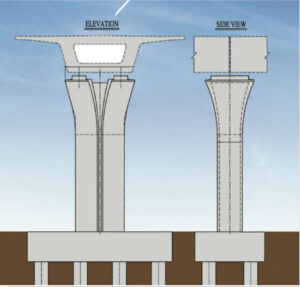
Around 70% of the new high speed line between Bangkok and Nakhon Ratchaisma will be elevated. SRT has yet to release full details for the Nakhon Ratchasima-Nong Khai stretch of the line, but generally the project’s strategy has been to maximize efficiency by using elevated construction except for areas where the line can run at ground level for significant distances without obstructions from roads or other infrastructure.
China’s New Silk Road: The Belt-and-Road Initiative
SRT describes the Thai-Chinese high-speed rail as a strategic project aligned to China’s BRI, sometimes referred to as the “New Silk Road.” The U.S. Council on Foreign Relations has called the initiative, “one of the most ambitious infrastructure projects ever conceived.”
China’s vision for the BRI includes completing high-speed rail lines that will connect it to Laos, Thailand, Malaysia and Singapore. The entire Kunming to Singapore north-south railway piece of the BLI will run 3,000 kilometres.
Expected Benefits and Possible Drawbacks
An analysis by the Thai Ministry of Transport identifies a list of seven core benefits they foresee for Thai people, most of them related to more efficient, convenient and safer inter-provincial travel. It goes on to suggest the project could significantly “promote tourism and regional communities.”
A 2019 Report from the World Bank, titled “Belt and Road Economics,” cautiously concludes that the Chinese BLI project could substantially improve trade, foreign investment, and living conditions for citizens in participating countries—but only if China and corridor economies adopt deeper policy reforms that increase transparency, expand trade, improve debt sustainability, and mitigate environmental, social, and corruption risks.
There might, however, be drawbacks to the project. The government has said that the Office of Natural Resources and Environmental Policy and Planning approved environmental impact assessment reports (EIAs) that allowed the project’s construction to go ahead back in 2017.
However, adjustments have been reported following further environmental assessments, For example, the government responded to recommendations by the UNESCO World Heritage Committee that the height and location of the Ayuthaya high-speed train station be adjusted over concerns that the structure would be visible from the Ayuthaya World Heritage site.
Some tradeoffs are inevitable for projects of such scale like this. Whereas the construction activity will certainly result in greenhouse gas emissions and affect local air quality, once operational the high speed rail line is designed to provide for far less carbon- and energy-intensive alternatives for long-distance travel across the region.
A completed high speed rail line connecting Vientiane to Bangkok could increase numbers and efficiency of flow of tourists and goods into Thailand, especially from China. However, it remains to be seen whether travelers crossing our region at a projected rate of 250 km per hour will have time to stop and enjoy Isaan’s cities and culture.
Or, will they simply blow past Isaan in an elevated flash? While construction on this stretch of the high-speed rail line will continue for at least a couple more years, The Isaan Record will continue to follow the project’s developments as new stations spring up in Isaan cities along the way.
Source: https://theisaanrecord.co/2025/09/29/long-planned-high-speed-rail-through-isaan-raises-hopes-and-questions/
